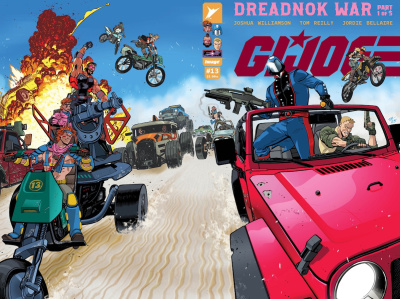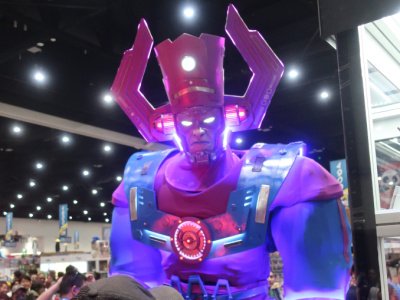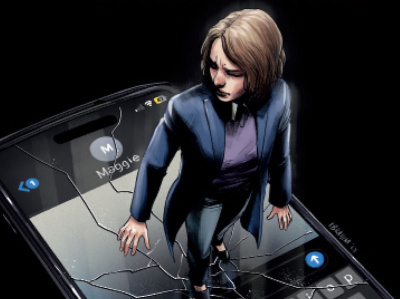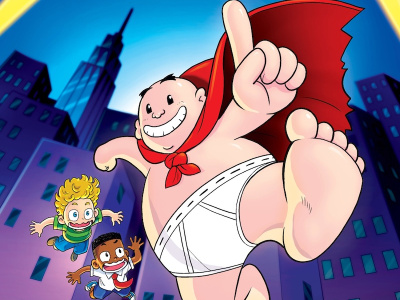 We talked to Marvel publisher Dan Buckley in our annual interview on the state of the market, Marvel’s year, and its plans for the future. In Part 1, we talk about the state of the market, comic pricing, and digital and motion comics. In Part 2, we talk about kids comics, movies and graphic novels, and Marvel’s 2010.
We talked to Marvel publisher Dan Buckley in our annual interview on the state of the market, Marvel’s year, and its plans for the future. In Part 1, we talk about the state of the market, comic pricing, and digital and motion comics. In Part 2, we talk about kids comics, movies and graphic novels, and Marvel’s 2010.What’s your view of 2009 in terms of comics sales, and Marvel?
In terms of comic sales, we’re pretty pleased considering the macro-economic issues our economy has gone through over the past year. I believe the retailers and the industry as a whole have performed admirably for lack of a better term. It’s pretty flat to maybe a minor downtick in over-all sales, but all in all I have to say we’re proving to be fairly resilient during tough times. I’m pretty proud of what our staff has done, some of the other publishers have done, and very impressed with what the retailers and Diamond to a certain degree have done.
Any differences between comics and graphic novels and how they responded to these conditions?
I didn’t see any vast difference. I would say as a whole the trades performed slightly better, but I don’t think that’s necessarily a trend that was affected by whatever was going on in the economy. I would say the collections performed slightly better. That’s really about it. I don’t know if that would have been the case with a growing economy, so I don’t think there’s anything really to be garnered from that.
How about by channel--comic stores versus book stores versus mass? Are you seeing any differences there? How did those channels perform for you on a relative basis?
On a relative basis the book market and retailer markets outperformed everyone else. From a percentage of my business standpoint they both performed about the same ratios as in the past. We saw a pretty good uptick in our book market business in the 4th quarter, comparatively, but that probably had more to do with some of the products we had offered; we had quite a bit of stuff that was targeted to perform more strongly in those markets. The Wonderful Wizard of Oz has outstripped anything we could have conceived of; we had Ender’s Game collections coming out latter half of the year; we had The Stand and Stephen King product hitting; and those tend to perform better in the book market. They still do pretty well in the direct market and hobby, but they’re comparatively stronger comparatively in those markets.
Marvel’s been expanding its presence in mass merchants fairly steadily over the last couple of years. Were there any changes there this year in terms of your penetration of those channels?
Not really, we held our own. The mass merch category’s probably the toughest category to work in because those retail entities as a whole are re-examining what they’re putting out in the aisle. Target, Wal-Mart, the big box stores are really evaluating what’s driving their sales. We did okay. We didn’t regress a great deal but we didn’t grow a great deal either. The newsstand business performed slightly better than I expected. We weren’t looking for real growth, we were just looking to make sure we maintained the reach and trial and awareness that we want that business to provide us.
A fair number of your periodical titles have now gone to $3.99 retail. We hear some complaints from comic store owners about the impact of those price changes on sales. What’s your perspective on the impact of the price changes on sales and what those trade-offs are?
My number one priority is to deliver a product that’s compelling to the consumer. In order to make sure I’m providing that quality product, we had to go through some pricing strategies that affected specifically that quality product. The pricing strategies on our limited series and other products have not changed; $3.99 is what it was over a year ago. We did not take an overall price hike. The $3.99 pricing was mostly focused on our top selling books which involve a variety of different quality issues. They have improved quality from art to production to creators. In order to maintain that quality that’s what we need to do to keep the health of the business. It may affect the bottom third of my circulation, I’m not going to deny that. We think those books performed pretty well but we also did not take the pricing tack of $3.99 with those books. If they perform well we’ll keep on publishing [them]; if they don’t they will not keep on publishing, we will cut down on our line a little bit. So all in all I understand the concerns but for me to keep their business healthy and for us to keep our business healthy we have to make sure that we have the best product we can provide. We can’t go backwards; that’s not at all acceptable.
Let’s talk a little bit about your digital initiative. We talked about that last year. I think you were up to about 5000 issues in your subscription service…
Yes.
How many issues do you have available there now?
I think we’re over 7000 right now.
How about the number of subscribers? How’s that versus what you…
I can’t really talk about that.
Versus expectations?
We’re happy with it. That’s all I can really say. I don’t release those numbers. But we’re very pleased with the performance of the digital comics subscription business.
Marvel has started selling some iPhone apps through third parties. Can you talk a little about what direction you might be going in terms of selling individual issues as downloadable content?
I can’t really give you a lot of insight right now because we just started doing this, probably three, four weeks ago. One thing about the digital market, you find out pretty quickly what works and what doesn’t. I think we have to be in that space to see how the consumer responds, how many consumers are really out there.
It’s also a very good space for us to be in to get more readers. I liken the digital publishing business to what the newsstand was twenty, thirty years ago. That transition hasn’t completed, and probably won’t complete for awhile. But consumers are getting very comfortable with digesting content that way, and it’s a very convenient way for people to get the content. I’m not saying that the app stores are not a challenge to shop in, but that’s something that will work its way out over the next couple of years through forces greater than Marvel’s.
Where we ultimately stand on the digital download business and how that interacts with our print business, that’s still kind of an open book. The most important business to us, and I say this every year in this interview, is our hobby retail business. It’s where our fans reside, it’s where our most loyal retailers reside. And whatever we do in the digital space is being developed and designed in a way that helps us build more print business and hopefully drives people to stores. I don’t think we’ll get 100% conversion that way, but if I can get thirty, forty, fifty, sixty per cent conversion that way from the digital consumer then that’s a huge win. That’s essentially what the newsstand business used to do for us. People tried comics, they went and got it. If they really liked it and wanted to make sure they could get everything and talk to like-minded people about it they found their way into a hobby shop, even if it might have been two or three hours away or if they did it through mail services. Strategically that’s how we see it. It’s an awareness and trial business that hopefully will expand the readership base.
And you see the subscriptions and the download sales coexisting as two different digital models?
Yes. And for the time being yes. The consumer will decide. One delivers an experience to browse, it’s streaming. It will allow you to kind of take a look at stuff that you might not want to buy and own. The other one is something you can take with you anywhere. You download it and you can consume it at any time, any place. Each of those experiences will probably evolve into different things. We’re just going to have to see where it takes us. We’re in the great unknown here. We’ve tried to kind of feel our way through the room. No one’s turned the lights on yet. (laughter)
Another new medium that Marvel’s been involved with recently is motion comics. I hear motion comics described as everything from bad animation to a really enhanced comic experience. Where do you think motion comics are going to be five years from now? Is that a viable new medium or is it a dead end?
I believe it’s going to be a viable new medium. I will not describe it as either of the two things you have. It’s a multi-media entertainment experience. It’s something we haven’t done before. It is slightly new, that’s why I think a lot of people get really hung up in describing it. Motion comics is probably the easiest way to describe it for when you’re consuming it on your iPhone because it’s originating from comic product and then it takes on voice, music, and motion. Ultimately what I’m trying to do with it is take some great works or bring some great creators and characters and present them in a fashion in which the consumer can experience it.
The reason why it’s a viable and interesting approach to bringing our characters and creators to the forefront is that in a lot of ways, the distribution and delivery of that type of product is easier for our consumer to understand and digest. Watching video is something that people are pretty used to. Sometimes folks get a little bit more challenged by the concept of reading. So if we can develop something that’s compelling to new consumers and old consumers alike then so be it, let’s go for it. It’s another way for people to say wow, comics are cool and I want to be involved in this in any way, shape, or form. How many people go buy a new book when a movie is out? A lot more people have read DaVinci Code because of the movie. I don’t think anything’s mutually exclusive against the other.
Click here for Part 2.







